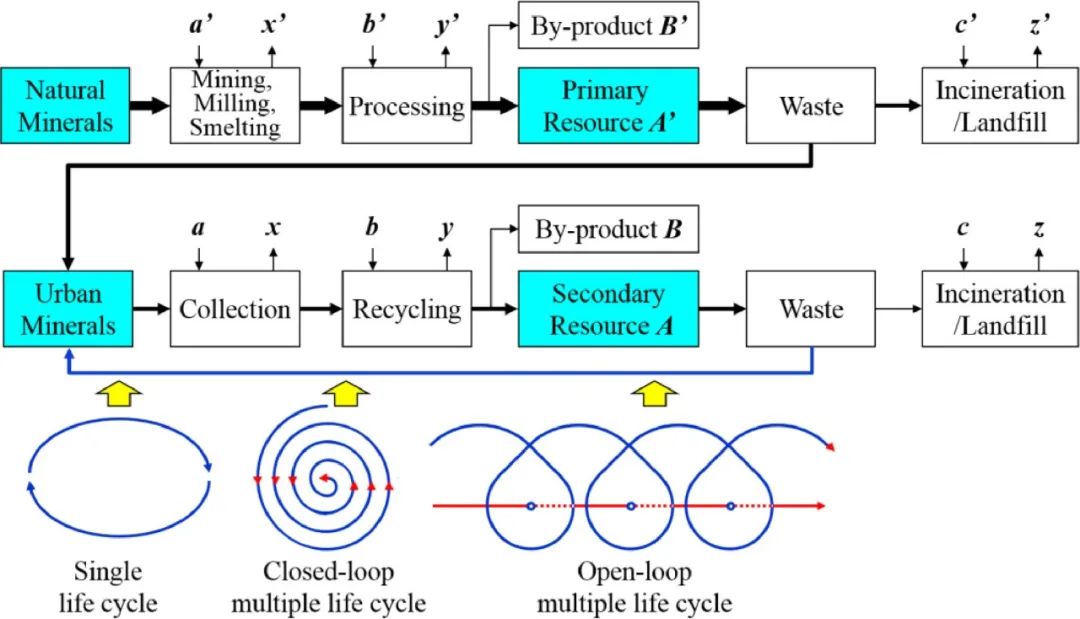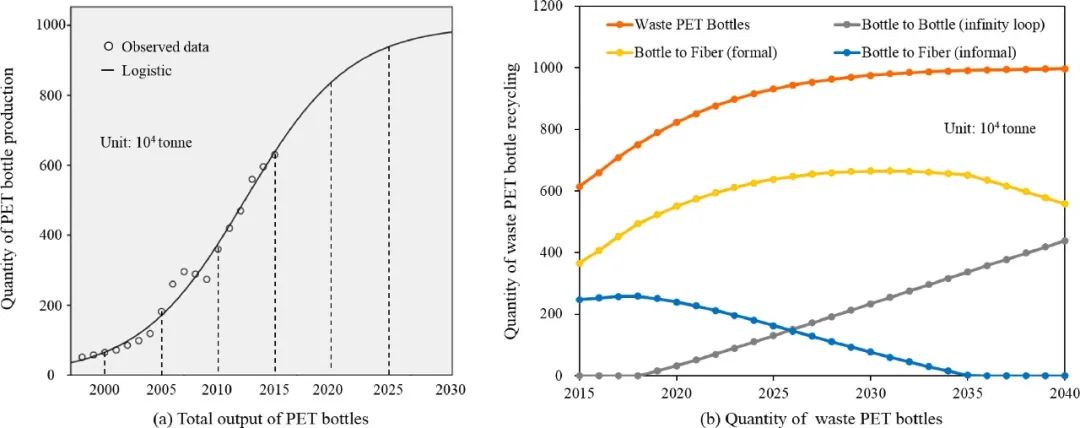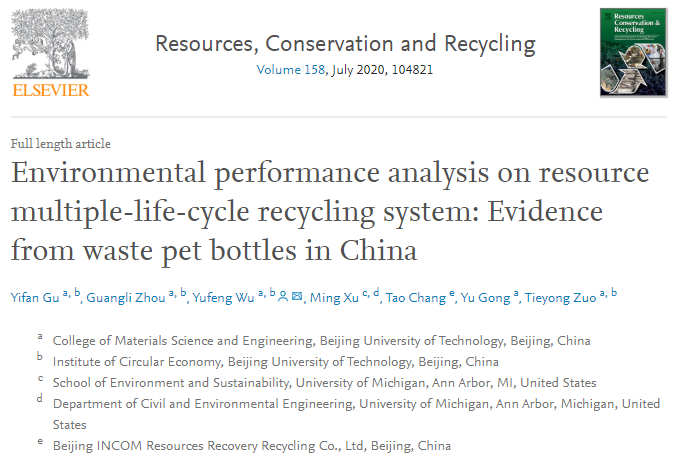
RCR新文:资源多生命周期循环系统的环境绩效分析 ——以中国废塑料瓶为例
文章导读
再生资源利用规模的不断扩大使得资源存在了多生命周期循环的可能,循环系统变的更为复杂。其一,如金属等资源可进行无限次循环,这使得资源供给具有乘数效应,可极大提升资源供给数量。其二,再生资源对原生资源的替代过程具有级联效应,资源前一个生命周期制备的产品将直接对后续循环过程产生较大影响。
塑料的多生命周期设计已成为了一个新的发展方向。中国是废塑料产生大国,尤其是废塑料饮料瓶(PET)。目前中国仅有少部分的废PET瓶重新进入正规回收利用渠道,PET循环系统的综合绩效仍存在较大提升空间。如何通过政策设计,提升中国废PET瓶多生命周期过程的环境绩效,仍处于探索之中。
有鉴于此,本文集成生命周期评价、物质流分析及环境价值核算法,构建多生命周期循环系统环境绩效核算模型,核算中国废PET瓶循环系统的环境总绩效,模拟押金制、再生资源推广使用、强化环境监督等多种制度实施对该系统绩效的影响效果,提出了中国废PET瓶循环系统的优化策略。
文章亮点
(1)建立了多生命周期循环系统的环境绩效核算模型;
(2)基于PET瓶多生命周期循环的研究视角,政策实施效果发生了较大变化;
(3)构建了适配中国长期减排目标的政策组合方案;
(4)建议面向资源多生命周期循环系统,构建一个跨越多部门的顶层管理机构。
资源多生命周期(MLC)循环过程是一个闭环与开环循环相互交织的复杂系统,近年来得到了广泛的关注。资源多生命周期循环过程具有级联效应,任意一个循环周期均会对下一个循环周期产生影响,并最终影响社会系统整体环境绩效。政策会影响到资源多生命周期循环流向,如何通过政策设计,最大限度地发挥资源多生命周期循环的减排效果仍处于探索之中。
本文以中国废塑料饮料瓶(PET)的多生命周期循环为例,构建了中国废PET瓶循环系统环境绩效核算方法,模拟了押金制、再生资源推广使用、强化环境监管等多种政策的实施对PET瓶循环系统的整体影响。选取优势策略构建了政策组合情景,可有效发挥各类政策情景优势,在2020-2040年间政策组合情景的环境绩效损失值仅为无政策支持情景的52.52%,废水、废气、固废的累积减排量则分别达到了98万吨、361万吨及3.41亿吨,可有力助推中国达到各五年计划的减排目标。
为实现政策组合情景,本文建议加快推动生命周期评价(LCA)方法向多生命周期评价(MLCA)转变,尽量准确核算再生过程的资源节约与环境减排效果;以多生命周期过程的环境经济综合效益最大化为目标,加快构建横跨多部门的自然资源顶层管理机构。


原文信息

Abstract
Resource multiple-life-cycle (MLC) recycling process is a complex system with closed-loop and open-loop recycling interwoven with each other, which has recieved vast attention in recent years. Resource MLC recycling has a cascading effect, one recycling process will have an impact on the next cycle, and ultimately affect the overall environmental performance of the social system. Policies will affect the flow of resource MLC recycling. How to maximize the emission reduction effect of resource MLC recycling through policy design is still under exploration. Employing MLC recycling of China's waste PET bottles as an example, this paper constructs an environmental performance accounting method based on MLCA, and simulates the overall impact of various policies such as implementing deposit system, promoting recycled materials, strenghtening environmental regulation and enhancing regeneration technology on the recycling system of PET bottles. The combined policy scenario is constructed by selecting advantageous strategies that can effectively give full play to the strengths of each policy scenario. From 2020 to 2040, the environmental performance loss value of the combined policy scenario will be 52.52% of the baseline scenario without policy support, and the cumulative emission reductions of wastewater, waste gas and solid waste will be 0.98, 3.61 and 341.39 million tonnes respectively, which can help China to achieve emission reduction targets set out in each five-year plan. In order to realize the combined policy scenario, it is suggested that the life cycle assessment (LCA) should be replaced by multiple life cycle assessment (MLCA), the effect of resource saving and environmental emission reduction in the recycling process should be accounted as accurately as possible, a top-level management organization of natural resources across multiple departments should be established as soon as possible, with the goal of maximizing the comprehensive environmental and economic benefits of MLC processes.
(来源:RCR期刊)
